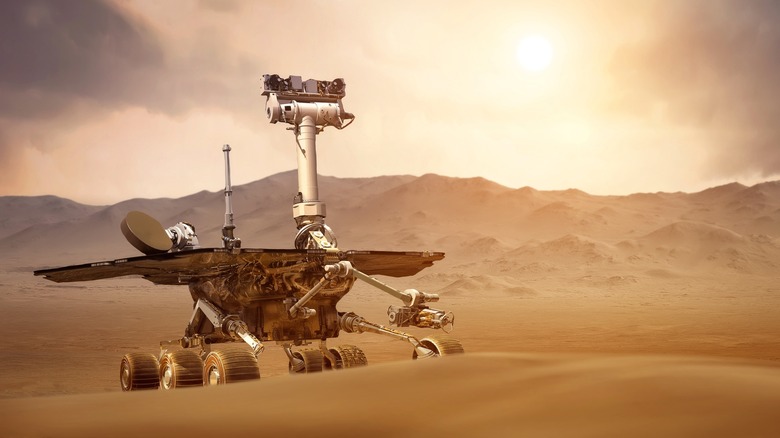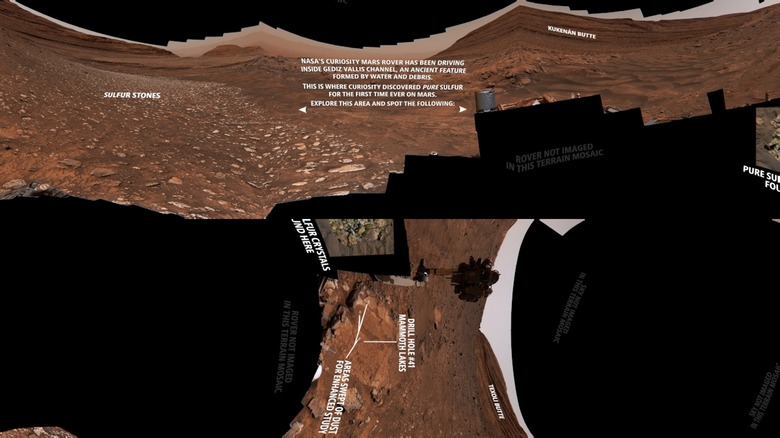Why Sulfur On Mars Was A Surprise (And Why It's Too Soon To Get Excited About Aliens)
Humans have been exploring Mars since NASA's Viking 1 lander touched down on the red planet on July 20, 1976. Since that time, technology has improved drastically, enabling landers to do all sorts of things, including gathering and testing soil samples, listening to Mars through microphones, and launching a helicopter UAV into the Martian skies.
Granted, people haven't made the journey just yet, but a mission like this is planned, so it's only a matter of time. With each new mission landing robots on the planet, new and interesting discoveries have come to light. We've confirmed the ancient existence of flowing water on the surface, meaning Mars might have been more habitable than we thought. We've also learned about the Martian atmosphere and weather systems, and we've even found ancient hot springs. Perhaps the most significant discovery happened in July 2024 with the discovery of sulfur.
NASA's Curiosity Rover was rolling on Mars on May 30, 2024, when it stumbled upon a cracked rock. Within the rock were yellow sulfur crystals, which definitely came as a surprise. The sulfur within the rock isn't a sulfate — a salt that contains sulfur — it's pure elemental sulfur. The discovery is fascinating for several reasons.
Scientists are still uncovering what the presence of sulfur means on Mars
When news of a new, important discovery on Mars hits the public, talk of aliens isn't far behind. To be clear, the finding of sulfur has nothing to do with the prospect of finding life on Mars, but it is significant nonetheless. Ashwin Vasavada, one of the project scientists on the Curiosity mission for NASA's Jet Propulsion Laboratory in Southern California, compared finding sulfur stones on Mars to finding an oasis in the desert in a NASA news story. "It shouldn't be there, so now we have to explain it," he said. "Discovering strange and unexpected things is what makes planetary exploration so exciting."
Finding sulfur on Mars is nothing new, and the element has been observed on the planet previously. What is unusual about the sulfur found in the exposed rock is that it's elemental sulfur, which isn't mixed with any other elements. This new finding offers a glimpse into how the rocks in the area of Gediz Vallis, where the rover is exploring, were formed and introduces a puzzle scientists will attempt to solve. It is thought that the Gediz Vallis might have been where ancient water once flowed on the planet, which could offer a clue into why this element is present.

